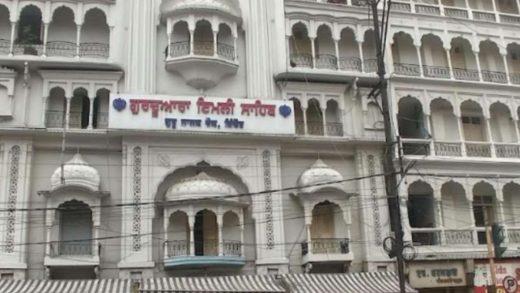CHACSINKIN, Mexico, Nov 25 (IPS) – María Bacab, a Native Maya, considers herself the “guardian of seeds” as she cares for the milpa – an ancestral Mesoamerican polyculture that mixes maize, beans, squash and other vegetables – and promotes its practice and use in Mexico.
“I worked with my parents since I was a little girl, I learned with them. The milpa is a benefit, because we don’t buy corn. I like it, because we’ve been doing it since we were children,” she told IPS in the community of X’box (the black one, in the Mayan language), in Chansinkin, a municipality in the state of Yucatán, southeastern Mexico.
The peasant farmer combines family care work with agriculture. After cooking breakfast and taking her children to school, Bacab, 41, who is divorced and has seven children, works on her one-hectare plot of land, returns at 11 a.m. to care for her children who go to secondary school, and then goes back to planting.
Each year, she grows 750 kilograms of grain for her own use, raises a pig, a native species of this Mexican region, and weaves hammocks to supplement her income. Her three eldest children help on the plantation.
Bacab is the only woman in a group of 11 milpa producers in X’box who store and exchange seeds. They select the best and save them for a year, which prepares them for shortages or losses due to flooding or droughts. The municipality has at least two seed banks .
Each farmer in the group plants different varieties, so that multiple maize options persist, including several drought-resistant ones, and some have hives for sale and self-consumption. They have adopted seeds from the southern state of Chiapas, and theirs have reached neighbouring Campeche, with which they share the Yucatan peninsula.
The peninsula is home to the majority of the Maya population, one of Mexico’s 71 indigenous groups and one of the most culturally and historically representative.
Maize is not only a native and predominant crop in Mexico, but a staple product in the diet of its 129 million inhabitants that transcends the culinary to become part of the country’s cultural roots, linked to the native peoples.
At harvest time, generally from January to March, the furrows of the cornfield are bright with green canes, from which the ears of corn hang waiting for the harvesting hand. From their rows will come the grains that end up in dough, tortillas (flat breads made from nixtamalised grain), atoles (thick drinks) and various other dishes.
Mexico’s three million corn farmers plant around eight million hectares, of which two million are for family use, in a country that has 64 varieties of the grain, 59 of which are native.
Mexico is the world’s seventh largest producer of maize, the world’s most widely grown cereal, and its second largest importer. It harvests some 27 million tonnes annually, but still has to import another 20 million tonnes to meet its domestic consumption.
As in the rest of the country, the milpa is key to the diet in the municipality of Chansinkin. Inhabited by 3,255 people, nine out of 10 were poor and one third were extremely poor in 2023.

Seeding the future
The Milpa para la Vida project, implemented by the US non-governmental organisation Heifer International since 2021, with funding from the US-based John Deere Foundation, promotes the improvement of milpa collectives such as the one in X’box.
The initiative is one of several in Yucatán that seeks to defend the territory and offer economic options in rural areas.
It aims to increase incomes by at least 19%, milpa productivity by at least 41%, and the amount of land under sustainable management by 540 hectares among participating farmers in 10 communities from Yucatán and two others in Campeche.
Since 2021, the project has benefited 10,800 people and the goal is to reach 40,000 by 2027.
Demonstration plots have achieved a production of 1.3 tonnes of maize per hectare, through agroecological practices such as the use of native seeds and biofertilisers, compared to the 630 kilograms harvested in 2021 with conventional practices.
But constraints remain, such as the application of pesticides and fertilisers donated by the Ministry of Agriculture.

In the neighbouring municipality of Tahdziú (place of the zui bird, in Mayan), 65-year-old Maya farmer Leonardo Puc treasures his seeds as his most precious commodity.
Although there was enough rain this year after an intense drought in 2023, “we face many difficulties, a lot of budworm (which eats the maize plant). We need maize to feed ourselves, producing it is what we do. We can’t just sit back and do nothing,” the farmer told IPS.
“That’s why nature teaches us,” said the married father with six children and coordinator of the 28-member Flor de Tajonal group, named after an emblematic local flower.
There are five seed banks in the Tahdziú area. In a hut with a high roof of huano, a local palm tree, and walls of wooden beams, transparent plastic jars with white lids line a shelf. They hold a key part of peasant life: seeds of yellow and white maize, squash and black beans.
Tahdziú also lives amidst deprivation, as its 5,502 inhabitants are practically all poor, and half of them live in extreme poverty.

Chickens that change lives
Flora Chan’s mother used to buy and raise chickens, so she was no stranger to the cage-free poultry egg farmer programme she joined in 2020 to improve her family’s economy.
“When we started, it was hard because people didn’t know about our eggs. Now they buy every day,” she told IPS in the courtyard of her home in the municipality of Maní (where it all happened, in Mayan), near Chacsinkin.
Chan, who is single and childless, has 39 hens and wants more. Every day she collects between 40 and 50 eggs. She cleans the henhouse early, checks the water and feed and rate of production. She also weaves textiles and oversees 100 hives of stingless melipona bees, a species endemic to the region and with highly prized honey.
A group of 217 women farmers, 19 in Maní, formed the Kikiba Collective (something very good, in Mayan) and whose seal, a hen, goes on each unit.
The breeders belong to the Mujeres Emprendedoras initiative, which began in 2020 in 93 communities from 30 municipalities in Campeche, Quintana Roo and Yucatán, with the help of the organisation Heifer.

The programme aims to strengthen local livelihoods in order to alleviate hunger, poor nutrition due to lack of animal protein and low incomes due to lack of market access.
In Mani, three quarters of the 6,129 inhabitants suffer from poverty and one fifth from extreme poverty.
Each participant receives training in the installation of backyard chicken coops, animal care and business management. Each year they replace the batch of 50 birds they receive and pass theirs on to a new member, until the birds stop laying and the women then use them at home or sell them at local markets.
The programme has covered 796 women farmers, with the goal of reaching 1,000 by 2026. The Kikiba Collective delivers 4,300 free-range eggs each week to two restaurants of a well-known Mexican restaurant chain in Merida, the capital of Yucatan. In addition, it sells retail and allocates 30% for family consumption.
At first, Chan’s neighbour Nancy Interiano was not interested in the project, but her friend convinced her to check it out. Today, the 43-year-old businesswoman, who is married with three children, has 60 laying hens.
“Seeing the results, other women are interested in joining and those who are already involved want to increase their poultry houses. With our knowledge and experience, we advise the new ones,” she told IPS.
In Mexico, 14.7 million women live in rural areas, representing almost 23% of all women and 12% of Mexico’s total population.
Due to a lack of suppliers of laying hens, breeders are limited in their ability to meet growing demand.
While solving this is out of their hands, Chan and Interiano enjoy every day watching their hens scratching the ground, climbing on wooden beams or settling into nests to lay the eggs that have changed their lives.
© Inter Press Service (2024) — All Rights ReservedOriginal source: Inter Press Service
Source link
#Mayan #Farmers #Improve #Livelihoods #Polyculture #Milpa #Mexico


















